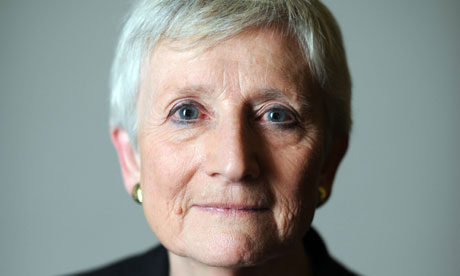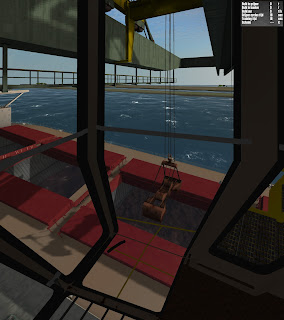UDT-Europe held in Alicante was fairly well-attended despite the lack of official usual naval and governmental delegations, according to several exhibitors. The keynote address from Adm. Jaime Munoz Delgado, Head of Naval Logistrics of the Spanish Navy set the tone for the conference and rolled into a panel discussion with Senior officers from four different countries (US, UK, France, Chile) in addition to Spain. The discussion was led by a former Spanish Admiral from the main corporate sponsor Navantia – to whom we owe quite a lot for their extraordinary contributions to this conference and modest but intriguing exposition. This panel examined the growing list of “complex undersea threats,” “operational challenges” and “industrial cooperation in fulfilling current and future requirements.” Succeeding plenary sessions on Wednesday and Thursday examined Undersea Challenges in the Next 20 Years – “How will the Undersea Landscape Look?” and simply “Maritime Security.”
The conference itself was primarily focused on the latest developments and experiences with sensors, C2 and C3, countermeasures for torpedoes and mines, signature management, the undersea digital realm, AUVs and RC UVs and MCM assets, weapons payloads, and platform designs components and combat systems. Please see the web site (www.udt-global.com) for more information and the opportunity to contact the organisers for presentations.
There were many compelling developments; we can only offer but a few highlights:
Seebyte announced the sale of its AUV software technology to the Royal Netherlands Navy and its role in a recent sale of technologies to Australia’s DSTO. It was also selected by the US DoD for FCT programme review.
Go Science Limited is the world's first and still only circular (tubular?) AUV that can be pretty much adapted to whatever task is required - within reason. It is a magnificent UK innovations, looks cool, easy on budgets, self-contained, fully-autonomous (but can be towed) and can left to run on its own fulfilling any number of stealthy AUV-initiated ISTAR missions. The software is platform agnostic, the IT is loaded into the "hoop" composite fibre body and the long-life battery is stored in the underbelly of the AUV, giving it ballast. This was by far the most intriguing and innovative AUV technology there and is - typically British: under-stated and under-promoted.
Kongsberg Mesotech announced the 5.0 version of MS 1000 processing software. Meanwhile Kongsberg Maritime, (Kudos on the 5th Fleet contract award…and the Italian Navy award…and the Japanese Navy award and…) and its not-too-recent acquisition Hydroid, have reached full “critical mass” whereby their post-mission analysis tools (i.e. for the Japanese Navy), Muse database integration (incl. cameras, sensors, etc.) and Navigation system technologies (i.e. form Hugin) and other proprietary technologies become fully-integratable and interoperable, available as an end-to-end solution or as individual components that can be used in new systems by prime contractors, upgrades, for LCM, etc. They can more cully capitalise on the Kongsberg and Hydroid specialities and use them together or separately in the defence, maritime security or off-shore realms. What they can offer is some of the best and most proven components and systems on a COTS and even MOTS basis. Arguably, this heralds a new area and level of interoperability for the UDT realm.
DCNS showcased their SCORPENE family SKKs and tis optional MEMA AIP section.
(Graphic: DCNS)
Saab Underwater Systems, part of Saab Dynamics, has a rather new and compelling offer in the form of the SUB ROV, which is modelled somewhat on the AUV 62, but is more modular to handle the growing list of multi-roles for UUVs / AUVs. It is torpedo tube-launched AUV that can be retrieved by a tethered unit to pull it back into dock in a submarine's flooded torpedo tube. It can be deployed and retrieved up to about 3 Km from the submarine. About the size of a typical heavy torpedo the XXX is fully modular to suit any number of missions making ti multi-role and cost effective. When it comes to UAV platforms, the motivs of modularity, COTS-MOTS crossovers, cost reduction and LCM underpinned the business strategy to meet growing needs effectively.
RJE International introduced their DNC-200/ 250 Diver Navigation and Mapping Consoles.
Sonardyne showed off its Solstice which weighs circa 2-3 kgs and has very sharp 100 metre range and views downward and to the sides of an AUV. Sonardyne remains the leader (based on units sold and in deployment) in diver detection with its rather heavier Sentinel However, what was really intriguing was their new acquisition of MARSS NIDAR, which is a very extensive C2 suite that surpasses anything on the market for habour, shore, even coastal threat detection analysis and response. Used with their or existing sonars, the NIDAR suite provides significantly more functionality, flexibiolity or adaptability than any other suit of its kind. It can even help decide and execute the most appropriate countermeasures based on its ability to conduct thorough threat analysis.
Recognised as the best performing intruder detection sonar on the market, SENTINEL has been deployed around the world to protect strategically important waterside facilities, ports and vessels.(Photo: Sonardyne)
TNO presented some nifty new enhancements to some of its solutions launched at UDT in London 2011. Among them most notably was the ability to use APPOXA - their remarkable passive diver detection technology - for detection of special ops using “Re-breather” SCBAs that have virtually no signature in water. To date, no one else has been able to do this. Their “Mud” VLA-SAS technology is still one of the best at discovering UXOs and other nasty things buried in silt and mud on the sea bed / ocean floor. Please see their website and look for the new PRIMA tablet system for identifying, tracking, counting, tracing marine animals…then, think laterally for a moment to see what’s likely to be next.
Prevco celebrated its 3000th PRV, made from titanium and these dual seal pressure relief valves will likely to continue to grow as they help reduce TCO and have longer life against galling and corroding – among other more obvious advantages. () Their ceramic subsea enclosures seem to have been engineered to overcome many of the problems previously associated with such structures, such as weakness in shearing tension, shock-laid susceptibility and lack of impact resistance.
BAE Systems was showcasing STINGRAY and ARCHERFISH torpedoes (the US favourite for common “mine neutralisation”), which is also configured for airborne deployment from helicopters and – when ready – the US Navy’s LCS. As an integrator, BAE Australia has a strong interest in the “de-risking” nature of the SEA 1778 programme in Australia. The contractors for this tender will be announced in 2013, which coincides rather nicely with the R A Navy's anniversary and the ever-so-slightly-shifted dates for Pacific 2014 into late 2013...it suits us and our sister publication, NAVAL FORCES just fine.
STINGRAY Mod1 Torpedo (Photo: BAE Systems)
DSG of Norway - the supercavitating round and multiple environment ammo innovators - have a mine / sub / torpedo / AUV-kill round. This multiple-defeat "bullet" looks a bit like the spike anti-tank round, only much smaller for firearm deployment. Richard Morgan of DSG heads up a NATO industry Study group that examine torpedo kill technologies and strategies. This pretty much clinches it that DSG is the clear leader in this very niche niche. But the possible other applications of their ammunition technology make them one to keep an eye on. (MILITARY TECHNOLOGY on Linked in will post the whitepapers on arming UUVs with supercavitating ammo and using said ammo for torpedo kill).
Bowtech, introduced the world’s first 3-D cameras for viewing and C2 operations with RC Robotics & UUVs to best provide the end user with life like depth perception and increase effectiveness when deploying these assets. Bowtech also makes a number of other innovative products including HD and low-light vision and sub-mariner covert vision, LED lighting, RF / Fibre Multiplexing, Fibre Optic rotary joints and other innovative offerings, including opticals on CBRN resilient recon vehicles.
One might note that Aselsan and Roketsan, segment leaders from Turkish were not exhibiting, but certainly keen to speak with partners and possible customers.
STAMP (Photo: Aselsan)
Enerysys / Hawker was there - but none of their competitors seemed to be present -to remind the industry who is powering them, “Lest we forget…”
And not to forget Atlas Elektronik, Hale Hamilton, Rafael, Rheinmetall, Thales, MacTaggart & Scott, Lockheed Martin, Raytheon, Truflo, Gamesa, and a host of others who keep subs submerged, AUVs autonomous and, really, our waters safe. When we see how BMT, Hydro Group, Edgetech, Seabotix and others cross from the commercial environment into the defence environment, one is reminded that this is also a realm of complementary interests and partnerships. For example, Nevesbu B.V. in the Netherlands are naval architects for submarines, working both as part of DUKCS (Dutch Underwater Knowledge Centre) - with Thales Netherlands, Imtech, and TNO – and as a provider of upgrades and LCM for “upkeep” it is easy to see how a company can be busy with both the commercial off-shore sector and the naval defence and maritime security sector at the same time. BTW – Nevesbu is also working with Navantia on its much acclaimed S80 and Malaysian Frigate upgrade programmes.
SEAFOX vehicle with COBRA attachment (Photo: Atlas Elektronik)
The Innovation Showcase gave exhibitors a chance to promote their latest and greatest - or even new ways of thinking about their leading offerings. The Chinese “corporate tourists” were also seen "walking the floor" with the Chinese Industry doing the typical photograph the living hell out of everything on every stand to copy ineffectively later - they don't even try to hide the fact that they are conducting industrial espionage anymore. (I’m a sinologist, speak Mandarin and used to advise companies on doing business in China – I can say this categorically and with impunity)
Although there are, on balance, good and not-so-good things about the organisation of UDT-Europe. But overall, participants seemed to be satisfied.
One word of advice to the organisers who put together a reasonably successful networking evening: “Please no more €100 (plus VAT!) ‘Flying Buffets’!” They are not good value in an age when budgets are tighter than ever before now.
Besides, after a long day at an expo, no one wants to chase wait-staff for their measly share of over-priced hors d oeuvres to try to piece together something of a satisfying evening networking meal. Normal buffets are nice – so, is the kebab shop I visited on the way to our hotel.

























.jpg)








